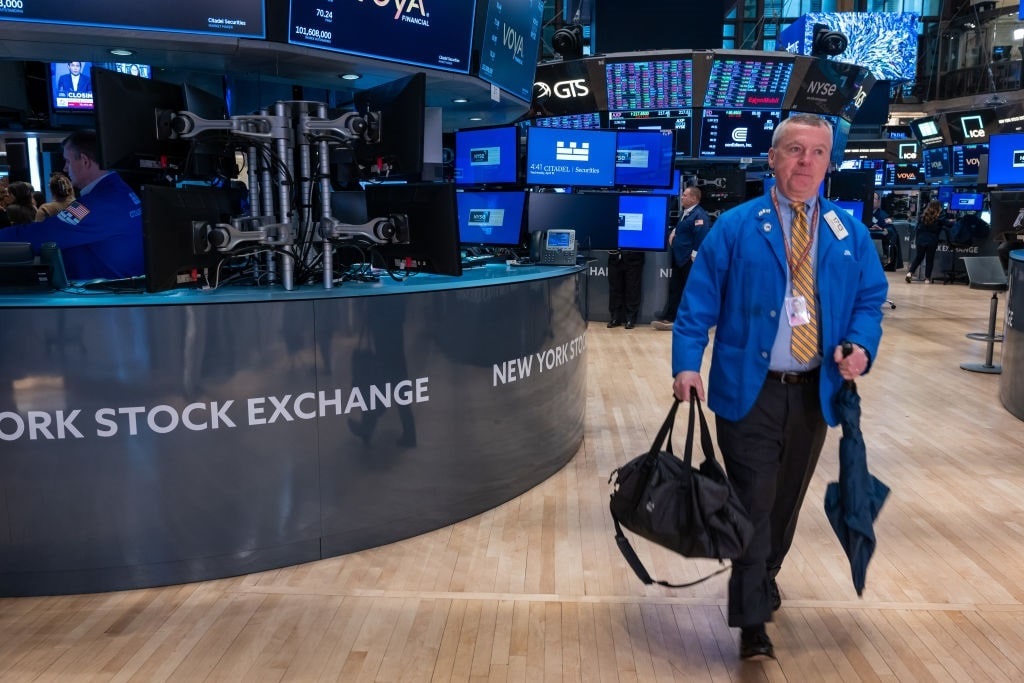Have the Federal Reserve’s 23-year-high interest rates finally filtered into the US economy? Investors are spooked after the latest not-so-good GDP report, resulting in a triple-digit nosedive on Wall Street during the April 25 trading session. Once the Bureau of Economic Analysis (BEA) released the first-quarter numbers, murmurs of stagflation popped up on social media. But was this minor turbulence in the path to a soft-landing, or is something else brewing?
GDP Screams Stagflation
The US economy expanded 1.6% in the first quarter, down from 3.4% in the previous three-month span. The GDP reading fell short of the consensus estimate of 2.5% and represented the lowest print since the second quarter of 2022. Personal savings tumbled to 3.6%, while real (inflation-adjusted) disposable income jumped 1.1%, down from the 2% gain in the October-December span.
 BEA numbers pointed out a slowdown in consumer and government spending. Personal consumption rose 2.5%, down from 3.3% in the fourth quarter and below the 3% forecast. But the debt-fueled binge accounted for nearly all of the growth in the January-March period. Government spending (federal, state, and local) eased to 0.21% and contributed roughly 13% to the final GDP figure. In addition, gross private domestic investment surged 3.2%, while net exports of goods and services rose 0.9%.
BEA numbers pointed out a slowdown in consumer and government spending. Personal consumption rose 2.5%, down from 3.3% in the fourth quarter and below the 3% forecast. But the debt-fueled binge accounted for nearly all of the growth in the January-March period. Government spending (federal, state, and local) eased to 0.21% and contributed roughly 13% to the final GDP figure. In addition, gross private domestic investment surged 3.2%, while net exports of goods and services rose 0.9%.
What stood out most to observers was the acceleration of inflationary pressures. The GDP Price Index, a measurement of prices paid for goods and services by consumers, businesses, and governments, advanced to a slightly higher-than-expected 3.1%, up from 1.7%. Personal consumption expenditure (PCE) prices rocketed to 3.4%, up from 1.8%. Core PCE, which eliminates the volatile food and energy components, soared to a higher-than-expected 3.7%, up from 2% in the fourth quarter.
Put simply, growth is slowing, and inflation is accelerating. This is not a terrific scenario after the Federal Reserve’s quantitative tightening crusade since March 2022.
Key Takeaways
The first takeaway is that the government juices the GDP number. As Liberty Nation has reported, governments at all levels have contributed between one-fifth and one-third to the final GDP. In the first-quarter BEA data, federal spending contracted by 0.1%, and state and local spending rose by 0.22%. When these contributions are this low, it will weigh on the overall gross domestic product and reveal how dependent the world’s largest economy is on the Leviathan.
Another factor is how this will influence the Federal Reserve’s decision-making process. Indeed, an easing GDP would be enough to force the monetary authorities to cut interest rates. However, a second inflation wave is forming and crashing into the shores of the United States, so the central bank might not be adamant about pulling the trigger on its first rate cut since the coronavirus pandemic. Ultimately, it is a balancing act for the policymaking Federal Open Market Committee.
This has the stock market freaking out. The leading benchmark indexes plummeted by triple digits, US Treasury yields spiked, and the US Dollar Index (DXY) erased its overnight losses once the data was published. The futures market is going as far as penciling in a single quarter-point rate cut this year, which is a far cry from what traders anticipated heading into 2024: six 50-basis-point reductions. Would it be enough to force the Eccles Building’s hand for one more rate hike? If so, expect bedlam on Wall Street.
Got Stagflation?
After the US government accumulated $600 billion in debt to kick off the first quarter, the best the United States can produce is $300 billion in growth. Maybe it is time for Washington to spend more ($7 trillion is not enough?) and the Federal Reserve to fire up the printing press. Without these instruments of stimulus and relief, the US economy might continue to slow down while also witnessing an inflation revival. Stagflation could be the name of the game heading into November’s election, potentially emulating what happened by the time millions of Americans ventured to the polls in 1980. History repeats itself.
EJ Antoni, a Heritage Foundation economist and Swamponomics TV guest, may have said it best on X: “Economic growth is below the pre-pandemic trend but much more worrying is the fact that the post-pandemic growth has been fueled entirely by gov’t borrowing: the increase in federal debt since the end of ’20 is 110% of the increase in GDP; this doesn’t end well…”




